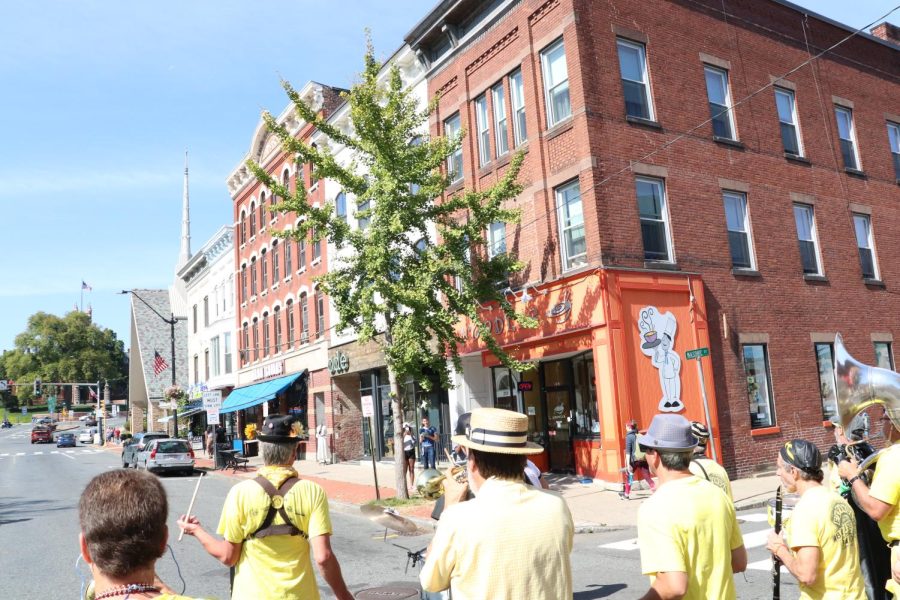
On average, humans tend to sleep for one-third of their day, which correlates to a whopping one-third of their life. If a person were to live for 75 years, he or she would theoretically sleep for about 25 years in total. But in the busy and stressful lives we lead, sleep often gets the backseat, and those “25+” years of sleep we plan to attain start to dwindle.
Of course, if we could function in this world without sleep as a necessity, we would. But, as this is not an option in the near future, sleep remains a biological requirement for human survival.
The Center for Disease Control and Prevention recommends that people 18-60 years old should be getting at least seven hours of sleep per night, yet many pride themselves on the fact that they manage to get by on less. Trying to balance social and academic lives seems to hinder time for sleep, which is both exhausting and unhealthy.
Seven out of 10 college students reported that they get less than the recommended amount of sleep per night. Unexpectedly, the many things that people avoid sleep for end up occurring as the result of insufficient sleep. For , the inability to learn, lack of focus, forgetfulness, weight gain, getting sick, along with a myriad of other negative effects are all caused by not getting enough sleep.
The answer seems clear: the solution to insufficient sleep is to get more sleep. But the problem lies within that solution. It is easy to say you will go to sleep earlier but actually doing it poses the real problem. And falling asleep, especially with a mind full of long to-do lists and worries, can pose an even more complicated issue.
There are a few remedies that may help those with racing minds fall asleep faster. One of the many things to do before going to bed is taking time to relax. Take an hour or so to brush aside all of your stresses for the day and avoid thinking about deadlines or work to do. There is plenty of time during the day to spend stressing. Dedicating that hour or so to wind down from the day can be both calming and healthy.
Another widely used method for falling asleep is called the “4-7-8 exercise.” This entails taking a deep breath in for four seconds, holding that breath for seven seconds, and then releasing that breath for eight seconds. The exercise aims to relax your heart rate and blood pressure through this breathing process.
If these remedies seem too time-consuming or just aren’t right, there are other less trying solutions. You can hide your clock so that you won’t be tempted to look at it, or, vent out your feelings on paper. Even putting on a pair of socks when you get into bed is conducive to sleep. Apparently, wearing socks helps with blood flow and optimizes your body temperature for sleeping.
Temperature is an important factor when it comes to falling asleep. The optimal sleeping temperature is between 60-67 degrees Fahrenheit because the cold helps speed up the process of falling asleep. This is also why taking a warm shower before bed can additionally help with the process of falling asleep. Stepping out of a hot shower into a cooler environment will further cause your body temperature to drop, which in turn slows your metabolism and prepares your body for sleep.
Light is also a crucial element in falling asleep. In today’s world of constant exposure to screens, the blue light that is present in the majority of devices hinders the body’s production of melatonin, which helps sleep. To avoid this exposure, try to stay away from electronic devices before you go to bed, or find a “night-shift” setting on your device so that it will not emit blue light.
As for the best time to go to sleep, the answer is different for everyone. The commonly circulated idea that every hour you sleep before midnight is worth two hours is, unfortunately, a myth.
From a scientific perspective, sleep is made up of a series of 90-minute cycles in which your brain shifts from both rapid eye movement (REM) sleep to non-REM sleep. Non-REM cycles are prominent at the beginning of your night’s sleep, and as it continues, the REM cycles become more frequent. The later you go to bed, the more REM cycles you will have within your sleep, which constitutes a less effective sleep.
Experts say that getting to sleep within the prime window, between 8 p.m. and 12 a.m., will provide your brain the best chance at getting a sufficient amount of both non-REM and REM sleep cycles.
But of course, getting to bed within that certain window is not always ideal. A more individualized method for getting in enough sleep is to calculate what time you will need to wake up in the morning and then work backwards. Once you choose a time, count backward, approximating the amount of sleep you plan to get. Then add about 10 to 15 minutes to the time you plan to go to bed. This time is factored in to give you some leeway to fall asleep.
With this method, the more you conform to the schedule, the more it will become routine. But be sure not to plan to go to bed too early. If you usually go to bed at 1 a.m., don’t suddenly try to go bed at 8 p.m. This is unrealistic and will probably not end in success. Slowly adjust your “bedtime,” going to bed an hour earlier at a time. This will help you more efficiently get into a plausible routine.
Jessica Chaiken can be reached at [email protected].


















M. Henry • Feb 26, 2017 at 3:19 pm
There are so many negative consequences to lack of sleep. Thank you for providing this guide!